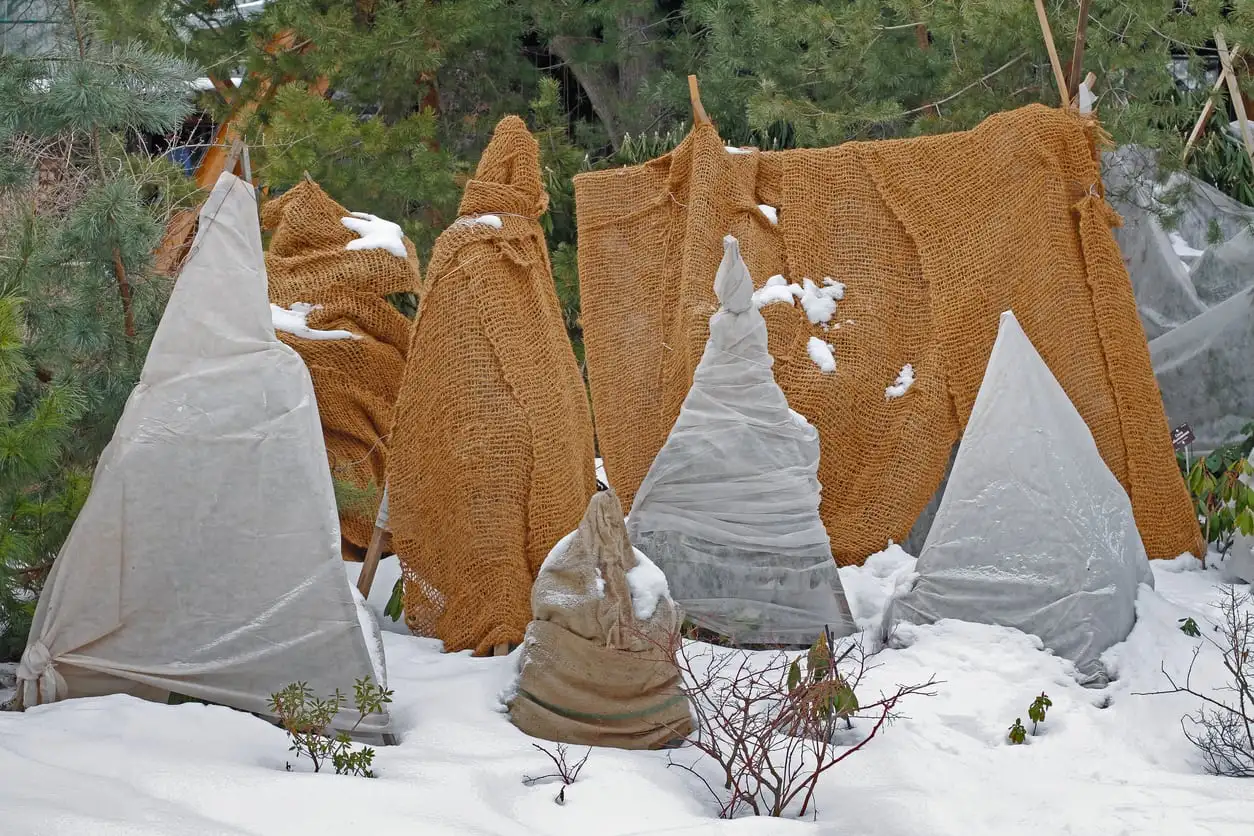- August 22, 2024
- Posted by: wellcoindustries
- Categories: Burlap, Erosion Control
Introduction
As winter approaches, gardeners everywhere start to worry about the fate of their beloved plants. Frost and freezing temperatures can wreak havoc on even the hardiest of plants, making it essential to find effective ways to protect them. One of the most reliable materials for this purpose is burlap. Burlap for covering plants offers a practical and eco-friendly solution to keep your garden thriving through the cold months. In this article, we’ll explore why burlap is an excellent choice for plant protection and how you can use it effectively to safeguard your garden.

Why Protecting Plants in Winter is Crucial
Winter poses a significant threat to plants, especially those that are not adapted to cold climates. Frost can damage plant tissues, leading to wilted leaves, stunted growth, and in severe cases, the death of the plant. This is why it’s crucial to take preventive measures to shield your plants from harsh winter conditions. Burlap is a versatile and effective material that provides insulation while allowing your plants to breathe, making it an ideal choice for winter protection.
Benefits of Using Burlap for Covering Plants
Burlap offers several advantages when it comes to protecting plants in winter:
- Insulation: Burlap traps warm air around the plant, reducing the risk of frost damage.
- Breathability: Unlike plastic covers, burlap allows air and moisture to circulate, preventing the buildup of condensation that can lead to rot.
- Environmental Friendliness: Burlap is biodegradable and reusable, making it a sustainable choice for eco-conscious gardeners.
By using burlap, you’re not only protecting your plants but also contributing to a more sustainable gardening practice.
How to Use Burlap for Covering Plants
Here’s a step-by-step guide on how to effectively use burlap to cover your plants:
- Measure and Cut: Start by measuring the plant or group of plants you want to cover. Cut the burlap to size, ensuring that it fully covers the plant and reaches the ground.
- Wrap the Plant: Gently drape the burlap over the plant, making sure it covers all sides. For taller plants, you might need to wrap the burlap around the plant in layers.
- Secure the Burlap: Use twine, garden staples, or wooden stakes to secure the burlap to the ground. This will prevent it from being blown away by the wind.
- Monitor the Plant: Check the covered plants regularly, especially after storms, to ensure the burlap remains in place and is not causing any damage to the plant.
By following these steps, you can effectively shield your plants from winter’s chill.
Other Uses of Burlap in the Garden
Burlap is not just for winter plant protection; it has various other applications in the garden:
- Mulching: Lay burlap on garden beds to control weeds and retain soil moisture.
- Erosion Prevention: Use burlap on slopes or newly planted areas to prevent soil erosion.
- Aesthetic Uses: Burlap can be incorporated into garden design as a rustic decorative element, such as wrapping around pots or using it as a backdrop for garden displays.
DIY Burlap Plant Covers
For those who enjoy a hands-on approach, creating your own burlap plant covers can be a fun and rewarding project. Here’s a simple guide:
Materials Needed:
- Burlap fabric
- Twine or garden staples
- Scissors
- Wooden stakes (optional)
Steps:
- Cut the Burlap: Depending on the size of your plant, cut a piece of burlap that will cover the plant completely.
- Create a Tent: For smaller plants, fold the burlap over the plant like a tent and secure it with twine or staples. For larger plants, wrap the burlap around them and secure it with wooden stakes driven into the ground.
- Adjust as Needed: Ensure that the cover is snug but not too tight, allowing for some airflow.
This DIY project not only saves money but also provides a customized fit for your plants.
Conclusion
In conclusion, using burlap for covering plants is an effective and sustainable way to protect your garden during the winter months. Its insulating properties, breathability, and eco-friendliness make it an ideal material for gardeners looking to shield their plants from the cold. By following the tips and steps outlined in this article, you can ensure that your plants remain healthy and vibrant throughout the winter. So, why not start preparing your garden now with burlap covers and give your plants the protection they need to thrive?
